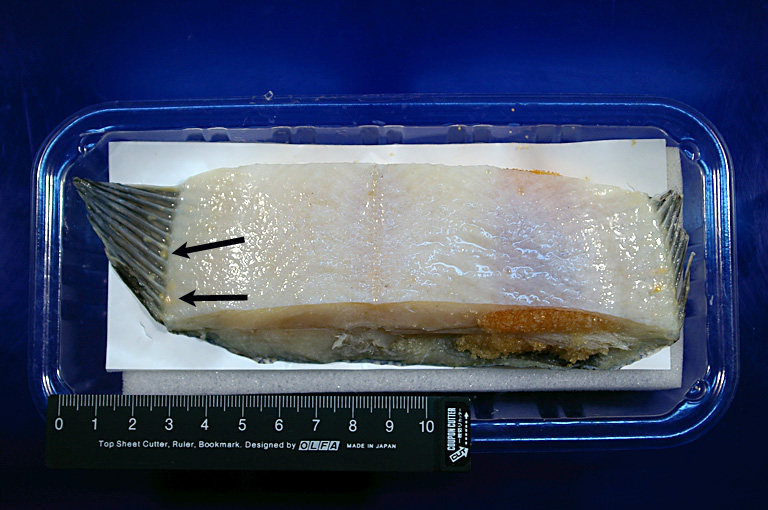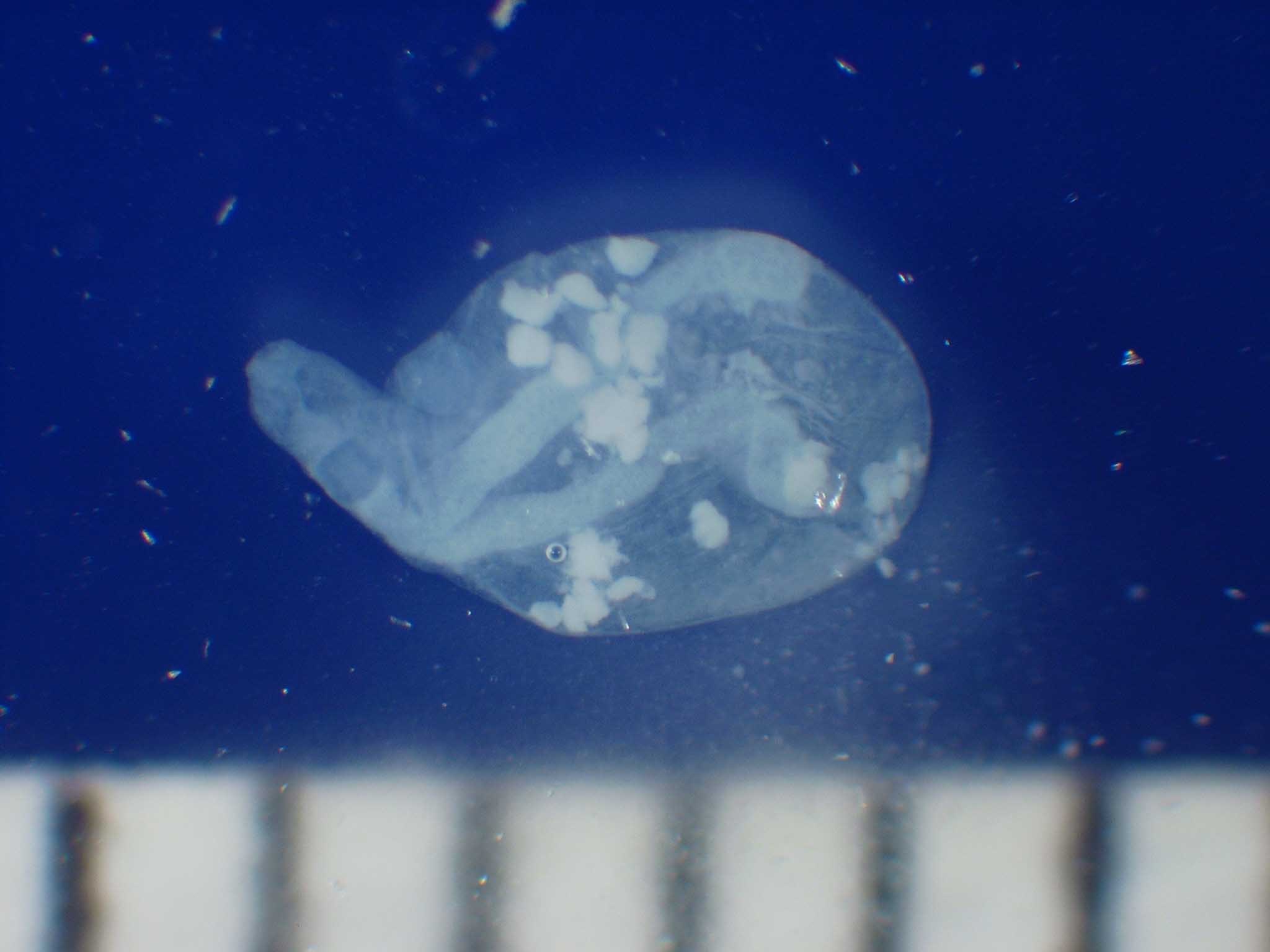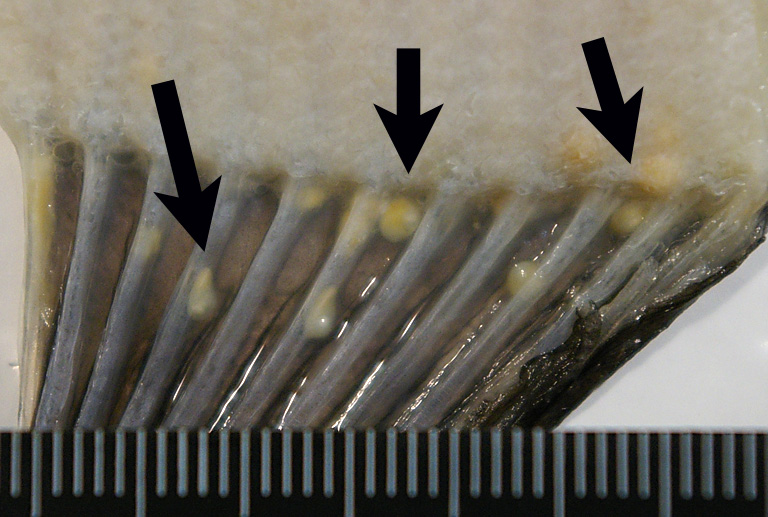

| Parasite | Unidentified trematoda |
|---|---|
| Taxonomy | Plathyhelminthes, Trematoda |
| Host | Dusky sole (Pleuronectes mochigarei) |
| Infection site | Fin |
| Clinical sign | Whitish granulated bodies (1.5-2 mm) are observed in the fin (Fig. 1). |
| Parasitology | Cyst is a metacercaria of
trematode encapsulated by the host’s connective tissue (Fig.
2). The body is ca. 3 mm long (Fig. 3). The parasite is not identified at a
species level because of the lack of adults. The life cycle is unknown. This
metacercariae may become adults after ingested by the final hosts (fish,
waterfowl or marine mammal). |
| Pathology | No report |
| Health hazard | Since no human trematode has been
reported in flatfish, it is probably harmless in food hygiene. |
| Diagnosis | The worm was diagnosed as trematode since it had an
oral sucker, a ventral sucker and the intestine. |
| Other information | This parasite was found in the frozen fillet with eggs of dusky sole imported
from Alaska. |
| References | No report |
Fig. 1. Fillet of dusky sole parasitized by trematodes (arrows)
in the fin.

(Photos by J. Araki)

Fig. 3. A metacercaria of trematode from the cyst.
Fig. 2. Cysts (arrows) of metacercaria in the fin.